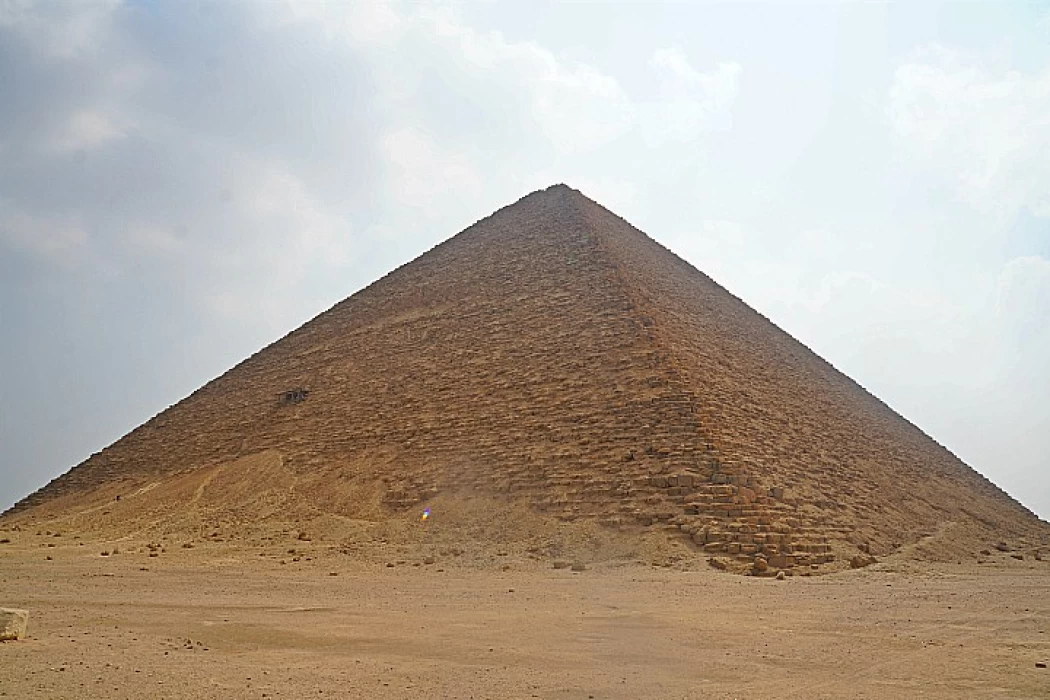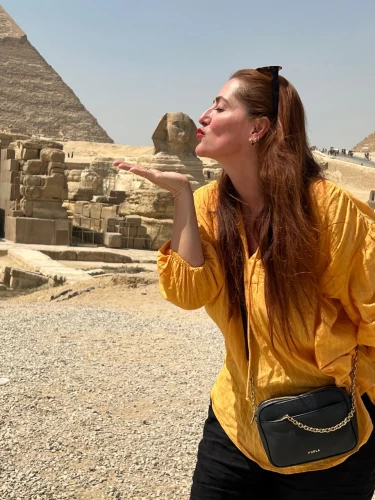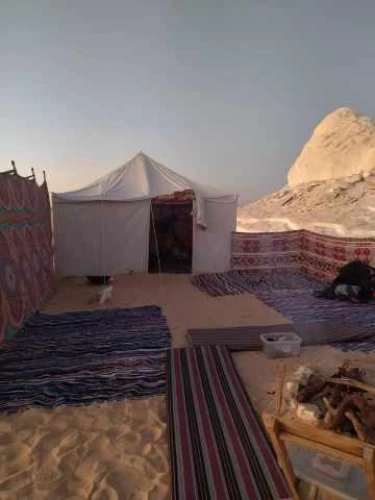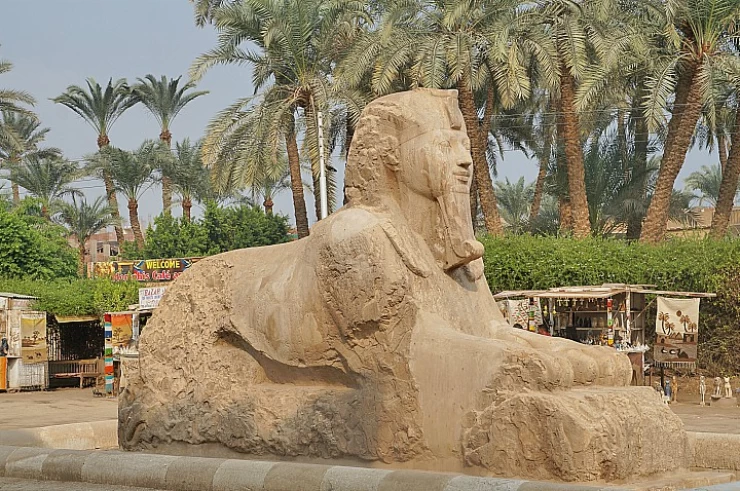
La Piramide Rossa
La Piramide Rossa
In Egitto La piramide rossa situata a Dahshor, uno dei siti archeologici meno pressurizzati, cose da fare al Cairo prende il nome comune dalla pietra calcarea rossastra usata per costruire la maggior parte del suo nucleo, ma a volte è anche indicata come Shining o Northern Pyramid. Imparando dagli errori precedenti, sono stati utilizzati diversi strati di calcare bianco fine per gettare le fondamenta della piramide, eliminando così i problemi strutturali delle piramidi precedenti.
Il calcare di Tura è stato utilizzato come pietra di rivestimento per coprire la piramide.
Forse maggiore importanza è il fatto che parte dell'involucro fosse datato. Questo non solo ci fornisce indizi sul tempo impiegato per costruire la piramide, ma anche sulla sequenza di lavoro che ha avuto luogo. Da lì, sappiamo che la piramide fu probabilmente iniziata tra il 22 ° e il 29 ° anno del regno di Snefru (che era il padre del re Cheope e il marito della grande regina Hetepheres). Altre date ci dicono che due anni dopo erano stati posati sei strati di pietra. Tuttavia, entro quattro anni, il 30 per cento della piramide era stato completato e l'intera piramide fu completata in circa diciassette anni.

È interessante notare che gli ingegneri della Piramide Rossa hanno imparato dagli errori della Piramide piegata a Dahshur e sono riusciti a costruire la prima vera piramide nell'antico Egitto. C'è nelle sue vicinanze un tempio e un gruppo di tombe.
A est della piramide si trova il tempio funerario, nonché il primo culmine mai trovato appartenente all'antico stato della piramide. Come la maggior parte delle piramidi egizie, l'unico ingresso è sul lato nord e conduce a un corridoio di 206 piedi che scende di 27 gradi fino alla prima stanza. La prima stanza ha un soffitto a gradini alto circa 40 piedi. In effetti, tutte e tre le stanze di questa piramide hanno soffitti spioventi, con tra gli undici e i quattordici strati. Anche con circa due milioni di tonnellate di pietra sopra, questo design del tetto è così forte che non ci sono crepe o problemi strutturali fino ad oggi.
Il nostro team vi aiuterà a viaggiare in Egitto e sperimentare il tempo soleggiato del nostro bel paese durante la Pasqua, grazie alla loro vasta conoscenza del turismo egiziano. Puoi personalizzare il tuo pacchetto selezionando uno dei nostri pacchetti di viaggio in Egitto o sfruttare al massimo il tuo tempo in una breve visita, imparando di più sulla storia egiziana e le sue affascinanti storie e vivendola attraverso tour privati al Cairo. Partecipa a uno dei nostri tour economici in Egitto attraverso il deserto del Sahara, come i tour di Siwa dal Cairo, per esempio, o preferibilmente i tour nel Deserto Bianco d'Egitto. Scoprite i nostri tour di un giorno ad Assuan, fate una gita di un giorno da Assuan ad Abu Simbel, o viaggiate via terra e godetevi i nostri tour di un giorno a Luxor per vedere gli incredibili templi di Karnak, il Tempio di Luxor, il Tempio di Hatshepsut, e vedete le meravigliose tombe splendidamente dipinte nella Valle dei Re, questo è il luogo dove i re e i governanti del nuovo regno riposano in pace e imparate i loro riti di mummificazione e sepoltura.
In Egitto esiste un luogo chiamato sito archeologico di Dahshur, dove si trova una piramide speciale chiamata Piramide di Amenemhet III. Se visitate questo luogo, imparerete molte cose interessanti su di esso.
The Red Pyramid not only solely emphasizes its reddish hue, which is the reason why it was given the Red Pyramid tag. It was also the first correctly built, smooth-sided pyramid instead of its predecessor stepped pyramids, which marked a great achievement in ancient Egyptian architecture, and most importantly, the Pyramid, which all aforementioned pylons were built following.
Sneferu's Architectural Legacy . The construction of the Red Pyramid is dated 2613–2589 BC, when Pharaoh Sneferu ruled over Egypt. This ruler is known in history for having built more pyramids than any other pharaoh of Egypt. The desire to build a perfect pyramid is seen in his other two major pyramid-building endeavors: the Meidum Pyramid and the Bent Pyramid. These two earlier ones, however, encountered some structural problems, with Meidum collapsing at some point in time while the Bent had to undergo a design change at some point as it was not stable.
The Red Pyramid, also known as the Northern Pyramid, resides in the Dahshur necropolis, situated 40 kilometers south of Cairo, where it also presents a more delicate tower-like shape as compared to the rest of the pyramids built before it. The construction of the Red Pyramid was remarkably smooth, thanks to advanced technology and lessons learned from previous projects, thus making it the first pyramid in history designed geometrically to be devoid of irregular surfaces. This will play a big part in his son Khufu constructing the Great Pyramid of Giza, which is one of the Seven Wonders of the Ancient World.
The Red Pyramid, ascending to a height of 104 meters (341 feet) above sea level, is the third tallest pyramid in Egypt after the Great Pyramid of Giza and the Pyramid of Khafre. It was originally a little taller than its present height, but similarly to a lot of ancient Egyptian structures, the outer casing stones were taken away as the years went by, hence the reduction in height.
Easily, one of the most outstanding elements of the architecture of the Red Pyramid is the fact it has smooth sides, which is different from the traditional pyramids that had steps of rising blocks. The slope of the pyramid, however, is a shallow angle of 43 degrees, which made it quite stable; this is because, after the experience with the inclined Bent Pyramid, which had an unsafe 54-degree slope until a third of the way up when they changed it, they understood that too much incline was not safe.
The term “Red Pyramid” is derived from the color of the local limestone used in the construction of the pyramid. Curiously, the pyramid was first covered with polished white Tura limestone that would have made it glitter in the sun. The majority of this outer casing was peeled off over the ages, letting out the reddish core inside. In present times, some of the white casing stones at the base can still be found in the present, showing the visitors how the pyramid was originally constructed.
The enormous size and smooth, sharp corners of the Red Pyramid are proof of the brilliance of Pharaoh Sneferu’s ancient Egyptian architects and their resolve to develop the construction of pyramids to the highest level.
The Red Pyramid, unlike most of the popularly known pyramids of Egypt, allows visitors to go inside, and it is one of the most exciting things to do in Egypt to get into it. The pyramid rests on a passage that snakes its way for quite a distance of 62 meters and leads downwards at an angle of about 27 meters underground.
After completing this passage, the visitors come across the first of the three burial chambers, all with corbel ceilings applied to help avoid crushing the structure by distributing the weight. The temples are magnificent, with cylindrical roofs stretching upwards of 12 meters (40 feet), giving an incredible opening and appreciating the skill of construction that dates back ages.
Without a doubt, the pyramid’s interiors are devoid of carvings or pictorial depictions; however, the grandeur and the feeling of antiquity still stand in great clarity. The red pyramid was however largely believed to be meant for the king’s burials, but it’s mentioned that his body has never been found inside the correct place, hence some history of this pyramid is ambiguous.
The Engineering Genius Behind the Red Pyramid
The Red Pyramid is a landmark construction in the history of ancient Egyptian architecture. After the architect, Sneferu tried to build the Meidum Pyramid but failed, and after the bending of walls in the Bent Pyramid, the skilled builders were able to apply the construction methods that ensured that the Red Pyramid could withstand the test of time for thousands of years.
The composite nature of this pyramid contributes to its success. First, the angle of the pyramid, which is not steep so much, lessens the chances of it falling, making it more stable than the bent pyramid. In the burial chambers, corbelled ceilings were also used to make sure that the ceilings in the inside structure could hold up the great mass of the pyramid, even that of the internal structures. Also, the placement of the stones, some weighing up to a few tons, clearly shows that the ancient civilization of Egypt had a great comprehension of science and could apply it in the structural engineering of the pyramids.
The construction of the Red Pyramid also involved advanced quarrying techniques, with limestone being procured from closer quarries and an extensive workforce used to move and place the stones. While the majority of them are believed to have been recruited laborers, these workers were capable of an extraordinary level of accuracy in the placement and fitting of the blocks to form the pyramid.
The structure sits in pride, displaying the creativity and ambition of Egypt. It is a clear understanding that the pyramids were not only burial places but also an escape of architectural marvels in mankind's journey.
A Hidden Gem for Travelers
In sharp contrast to the lively and heavily visited Giza pyramids, the Red Pyramid welcomes its visitors in a calm and personal way. Being in the Dahshur Necropolis, a zone where there are relatively few visitors, makes it a treasure for those who wish to appreciate the ancient history of Egypt more peacefully.
Both climbing into the pyramid and walking through its narrow, dark corridors and entering inside the vast burial rooms are completely different experiences as compared to the interior of the Great Pyramid of Giza, which is often filled with tourists and under strict security. The Red Pyramid is more conducive for those interested in looking at the ancient civilization, especially since it has not been changed or corrupted.
The Red Pyramid is also in great demand among professional photographers because of its bright red limestone walls set against the brilliant blue sky and the golden desert sands. Visitors can also climb a short way up the side of the pyramid, which presents a view of the Dahshur necropolis that includes the Bent Pyramid and a few other tombs and structures.
The Red Pyramid is located in Dahshour, a conic burial ground for royal figures of the Old Kingdom and other structures. Besides the Red Pyramid, the other pyramid built by Sneferu in Dahshur is the Bent Pyramid, noted for its distinct structure with an angle that altered about halfway through construction. Besides the pyramids themselves, visitors going to Dahshur can also visit other ancient remains, including the smaller pyramids and mastabas, which hint at the activities of the pre-Egyptian dynastic period.
Dahshur being less developed and commercialized is unlikely to appeal to many tourists but is ideal for architectural enthusiasts in the vacationing period. It is a place both for history lovers and daring explorers; one can visit the pyramids and the tombs without the annoying presence of tourists that abound in the other popular tourist locations.


















